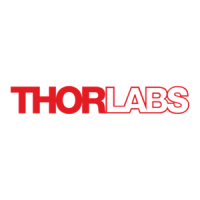© 2016 Thorlabs Scientific Imaging58
DCx Camera Functional Description and SDK Manual
2.9 USB Interface
History and development
Structure and topology
USB 2.0 cabling and connection
USB 3.0 cabling
Data transmission and bandwidth
2.9.1 History and Development
The Universal Serial Bus (USB) is an interface which enables you to easily connect various devices
to a PC. As all data exchange is controlled by the PC, no additional interface controller is needed.
Further advantages of USB are:
The PC does not have to be shut down when connecting USB devices (hot plugging).
USB devices can be supplied with power from the PC.
High bandwidth for data transmission.
The USB standard was developed by a group of companies including Compaq, IBM, Intel, and
Microsoft. Version 1.0 was presented in 1995. The slightly faster USB 1.1 standard followed in
1998.
At first, the USB interface was designed to connect peripheral devices such as printers, mice, or
keyboards. With the introduction of USB 2.0 in 2000, the transfer rate increased to 480 Mbit/s,
making USB 2.0 suitable for connecting devices with higher data volumes (such as mass storage
devices, scanners, or cameras).
In 2008, with USB 3.0 a new version of the interface has been published, which is significantly
faster than USB 2.0 (400 MByte/s).
2.9.2 Structure and Topology
USB uses a tree topology and is host-controlled. That means that a PC with host functionality is
mandatory for using USB. Therefore, it is not possible to directly connect two USB devices (with
the exception of USB on-the-go compliant devices). Neither is it possible to connect a camera to a
PDA device.
Theoretically, 127 devices can be connected to a host controller. Using external hubs or repeaters,
even more devices can be connected, and from a greater distance. Provided that a maximum of 5
hubs/repeaters may be daisy-chained, USB devices can be connected in up to seven levels.

